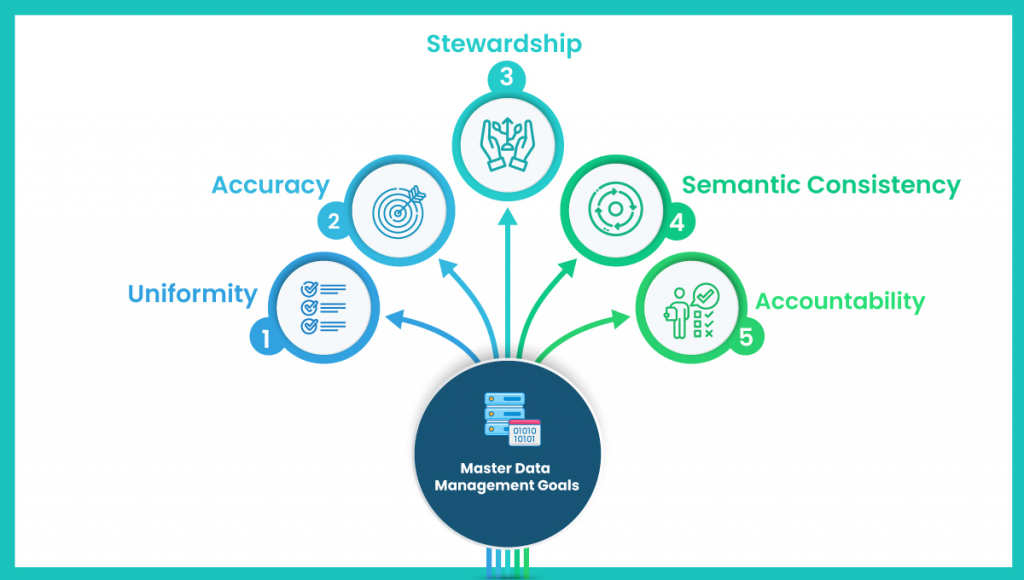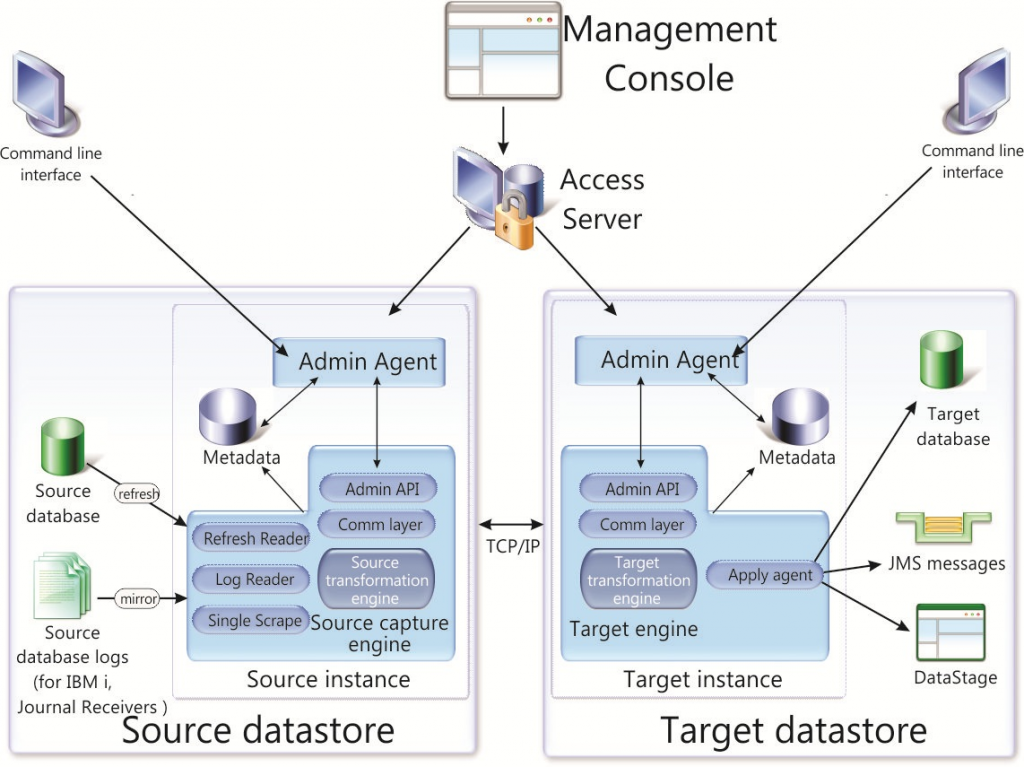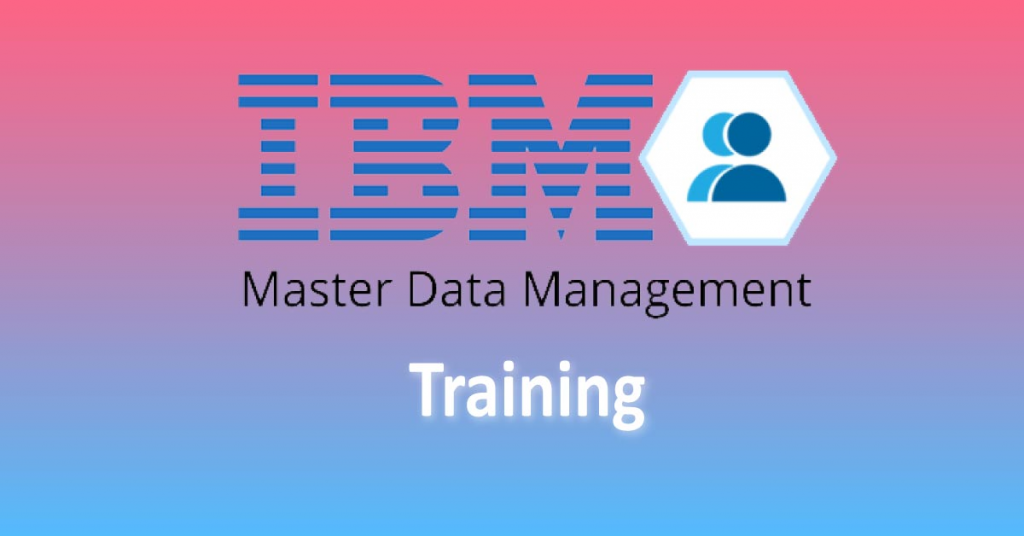What is IBM InfoSphere MDM?

IBM InfoSphere Master Data Management (MDM) is a comprehensive solution designed to help organizations create and manage accurate, consistent, and complete master data across the enterprise. It provides a unified view of critical business entities like customers, products, suppliers, and locations, allowing organizations to make informed decisions, improve operational efficiency, and enhance customer experiences.
Top 10 use cases of IBM InfoSphere MDM:
- Customer 360: Create a single, comprehensive view of customer data across different systems and channels.
- Product Information Management: Manage consistent and accurate product data for effective product lifecycle management.
- Supplier Data Management: Ensure reliable and up-to-date supplier data to streamline procurement processes.
- Patient Data Management: Maintain accurate patient records for healthcare organizations to improve patient care.
- Employee Data Management: Centralize employee data for efficient HR processes and workforce management.
- Location Data Management: Manage location information for optimized logistics, supply chain, and sales operations.
- Regulatory Compliance: Ensure compliance with data privacy regulations by managing sensitive data.
- Financial Data Management: Centralize financial data for accurate reporting, risk management, and compliance.
- Mergers and Acquisitions: Integrate and consolidate data from merged organizations for unified master data.
- Reference Data Management: Manage reference data and codes consistently across the enterprise.
What are the feature of IBM InfoSphere MDM?

- Data Modeling: Define and customize data models to represent master data entities and relationships.
- Data Governance: Establish data ownership, stewardship, and data quality rules.
- Data Integration: Integrate data from various source systems into the MDM hub for a unified view.
- Data Quality Management: Implement data cleansing, validation, and enrichment to improve data quality.
- Golden Record Management: Identify and manage the best version of master data, known as the “golden record.”
- Hierarchy Management: Create and manage hierarchies for entities like customers, products, and organizations.
- Data Stewardship: Assign data stewardship tasks and workflows for data quality monitoring and resolution.
- Data Security: Implement access controls and data security measures to protect sensitive master data.
- Data Matching and Merging: Identify and merge duplicate records to maintain data accuracy.
- Multi-Domain Support: Manage multiple types of master data domains (e.g., customer, product) within a single platform.
How IBM InfoSphere MDM works and Architecture?

IBM InfoSphere MDM follows a hub-based architecture:
- Hub: The MDM hub is the central repository for master data. It stores golden records, relationships, and metadata.
- Source Systems: Data from various source systems is integrated into the MDM hub. Integration can be batch or real-time.
- Data Quality Services: Data quality processes cleanse, standardize, and enrich data before it’s loaded into the hub.
- Matching and Merging: Data matching algorithms identify duplicate records and merge them into a single golden record.
- Data Governance: Data stewards manage data quality, resolve exceptions, and ensure data accuracy.
- Consumers: Applications and systems access the MDM hub for accurate master data through APIs or connectors.
How to Install IBM InfoSphere MDM?
Installing IBM InfoSphere MDM involves multiple steps and can vary based on your environment. Here’s a general outline:
- Prerequisites: Ensure your system meets the hardware, software, and database requirements.
- Obtain Software: Download the InfoSphere MDM software package and obtain necessary licenses.
- Database Setup: Set up the required database (e.g., DB2, Oracle) for storing MDM metadata.
- Install MDM Server: Install and configure the InfoSphere MDM server components.
- Configure Environment: Configure environment settings, including database connections and security.
- Create Domains: Define and create master data domains for the entities you want to manage.
- Data Model Configuration: Configure the data model and attributes for each master data domain.
- Integrate Sources: Set up integration with source systems to load data into the MDM hub.
- Data Quality Setup: Configure data quality processes for cleansing and enrichment.
- Configure Security: Implement role-based access control and security measures.
- Deploy and Test: Deploy the configured MDM solution and test its functionality.
- Monitor and Optimize: Implement monitoring tools and processes for ongoing management and optimization.
For detailed instructions and guidance, refer to IBM’s official documentation, knowledge base, and training resources.
Basic Tutorials of IBM InfoSphere MDM: Getting Started
Here, Let’s have a look at a basic outline of the process involved in getting started with IBM InfoSphere MDM:

Step-by-Step Basic Tutorial of IBM InfoSphere MDM:
Step 1: Install and Configure IBM InfoSphere MDM:
- Obtain the necessary installation files and licenses from IBM.
- Install and configure the InfoSphere MDM server components on your chosen platform (Windows, Linux, etc.).
- Configure the necessary database (e.g., DB2, Oracle) to store MDM metadata.
Step 2: Set Up Master Data Domains:
- Define the master data domains you want to manage (e.g., customer, product, location).
- Configure the attributes, relationships, and hierarchies for each domain.
Step 3: Data Model Configuration:
- Define and customize the data model for each master data domain.
- Create attributes, data types, and validation rules for the entities.
Step 4: Data Integration and Source Systems:
- Set up integration with source systems that will provide data to the MDM hub.
- Define the data extraction, transformation, and loading (ETL) processes.
Step 5: Data Quality and Cleansing:
- Implement data quality processes to cleanse, standardize, and enrich incoming data.
- Configure data quality rules and validation routines.
Step 6: Data Matching and Merging:
- Configure data matching rules to identify duplicate records.
- Define merge strategies to determine how duplicate records should be consolidated.
Step 7: Data Governance and Stewardship:
- Set up data stewardship roles and responsibilities within the MDM solution.
- Implement workflows for data quality monitoring, exception resolution, and approval.
Step 8: User Access and Security:
- Configure user authentication and authorization settings.
- Define roles and permissions for different user groups.
Step 9: Deploy and Test:
- Load sample data from source systems into the MDM hub for testing.
- Verify that data quality processes, matching, and merging are working as expected.
Step 10: Monitoring and Optimization:
- Implement monitoring tools to track data quality, system performance, and data integration processes.
- Continuously optimize the MDM solution based on monitoring insights.
Please note that this is a high-level overview, and the actual steps and configurations may vary based on the version of IBM InfoSphere MDM you are using and your organization’s specific requirements. It’s strongly recommended to refer to IBM’s official documentation, tutorials, and training resources for detailed and up-to-date instructions specific to your environment.
Email- contact@devopsschool.com

 Starting: 1st of Every Month
Starting: 1st of Every Month  +91 8409492687
+91 8409492687  Contact@DevOpsSchool.com
Contact@DevOpsSchool.com
